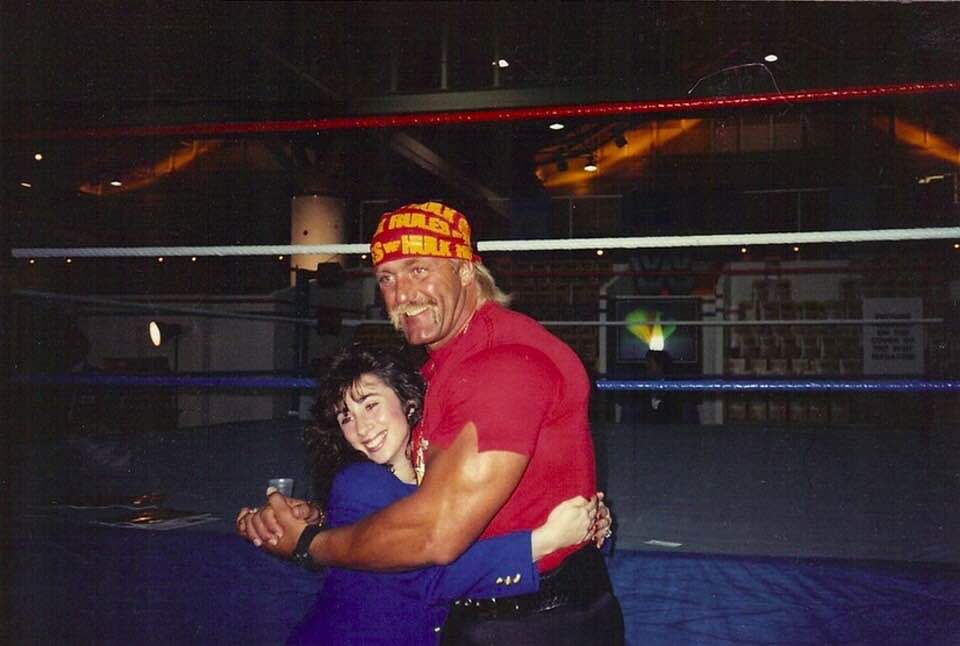
The North American sports landscape is littered with failed launches of major leagues to compete with the established players. In basketball, the ABA collapsed, and four remaining viable franchises joined the NBA in 1976. A similar thing happened in hockey three years later when the WHA failed in its effort to take on the NHL.
No sport, however, has seen as many failed professional major leagues as football, as the NFL has fended off competition from many upstarts, including the WFL in the 70s, the USFL (featuring Donald Trump as a franchise owner) in the 80s, the UFL roughly a decade ago and the very recent AAF, which was shut down after eight weeks of play in 2019.
When Vince McMahon, best known for his leadership of World Wrestling Entertainment, announced his intention to launch the XFL, many rolled their eyes in anticipation of the next major football league failure. (Full disclosure: My wife, pictured here with wrestling legend Hulk Hogan, worked in sales marketing for what was then known as the WWF 30 years ago.) Increasing the skepticism of many was the fact that McMahon launched and failed with a previous incarnation of the XFL in 2001.

Yet, here we are four weeks into the inaugural season of this new incarnation of the XFL and—while it is far from a runaway success—there are numerous signs that the league is off to a good start. Television ratings, which provide a quick, early read, reveal that the games are attracting roughly two million viewers each on the major broadcast networks and about half that on cable networks. These audiences are comparable in size to college and NBA basketball games that have aired nationally in recent weeks. Not surprisingly, ratings—as well as game attendance—have declined since the opening week, but they remain decent. Furthermore, the XFL is generally receiving coverage from the sports media as a credible entity and even the often toxic world of social media is not rife with posts and tweets criticizing the league.
Before I outline the positive moves the league has made, let me take you back to 2001 and the first version of the XFL. It featured tons of WWE-style “attitude” and cast itself as a macho, hardnosed alternative to the NFL (which XFL executives derided as “the No Fun League”) and its recently-initiated rule changes designed to enhance player safety and promote greater sportsmanship. The XFL celebrated the violent, in-your-face side of football and threw in sexy cheerleaders as a bonus. It was created by people reacting to anecdotal negative comments they were hearing from football fans, and as a result, these people vastly underestimated the strength of the NFL and miscalculated what fans wanted out of football. In other words, the first incarnation of the XFL was a classic case of Inside Thinking, with its backers rolling out a strategy based on what they believed the public thought of the NFL and they craved as an alternative.
Today, however, McMahon and company seem to have learned from their previous failure. They are acting like Outside Thinkers, viewing the potential opportunity for another professional league from the perspective of the fans.
What has the XFL gotten right?
- They conducted research. XFL executives have been open about the fact that they took the time to ask football fans what they were seeking in another football league and they learned that the quality of the play was more important than the attitude, violence or sexy cheerleaders the first version of the XFL delivered.
- They invested in the product. Based on what it learned in the research and knowing it would be working with a lower caliber of players than the NFL, the XFL had more than 1,000 players converge in Houston for 18 days of intensive training camps before the season began. Having the camps for all eight XFL franchises in the same city allowed for greater quality control, improving the chances that each team would put its best foot forward when the season began.
- They took care of distribution. All XFL games are airing on major television networks, with weekly games on ABC and FOX and remaining games on their ESPN, ESPN2, FS1 and FS2 cable networks. The league is also offering a streaming video option via fuboTV.
- They didn’t directly challenge the dominant player. The XFL season started immediately after the NFL season and, perhaps more importantly, the league did not repeat its earlier mistake and waste energy on bashing the NFL. Instead, the league is trying to ride the coattails of the dominant player and get the most passionate football fans to keep following the sport after the NFL season ends.
- They innovated appropriately. Part of what is capturing fans’ interest are the differences between the XFL and the NFL. This includes subtle things like the broadcasting of play-calling by the coaches, in-game sideline interviews with players and embracing gambling. It also includes bigger rules changes, such as the XFL’s attempt to bring back excitement to kickoffs without risking player safety and the options for one-, two- and three-point conversions after touchdowns.
One can argue that the first incarnation of the XFL only did one of the five items above, as it was a joint venture with NBC, which aired its games during primetime.
Will the XFL survive? I honestly do not know, but its embrace of Outside Thinking makes me believe its chances of being around five years from now are infinitely better than any of its predecessors.
